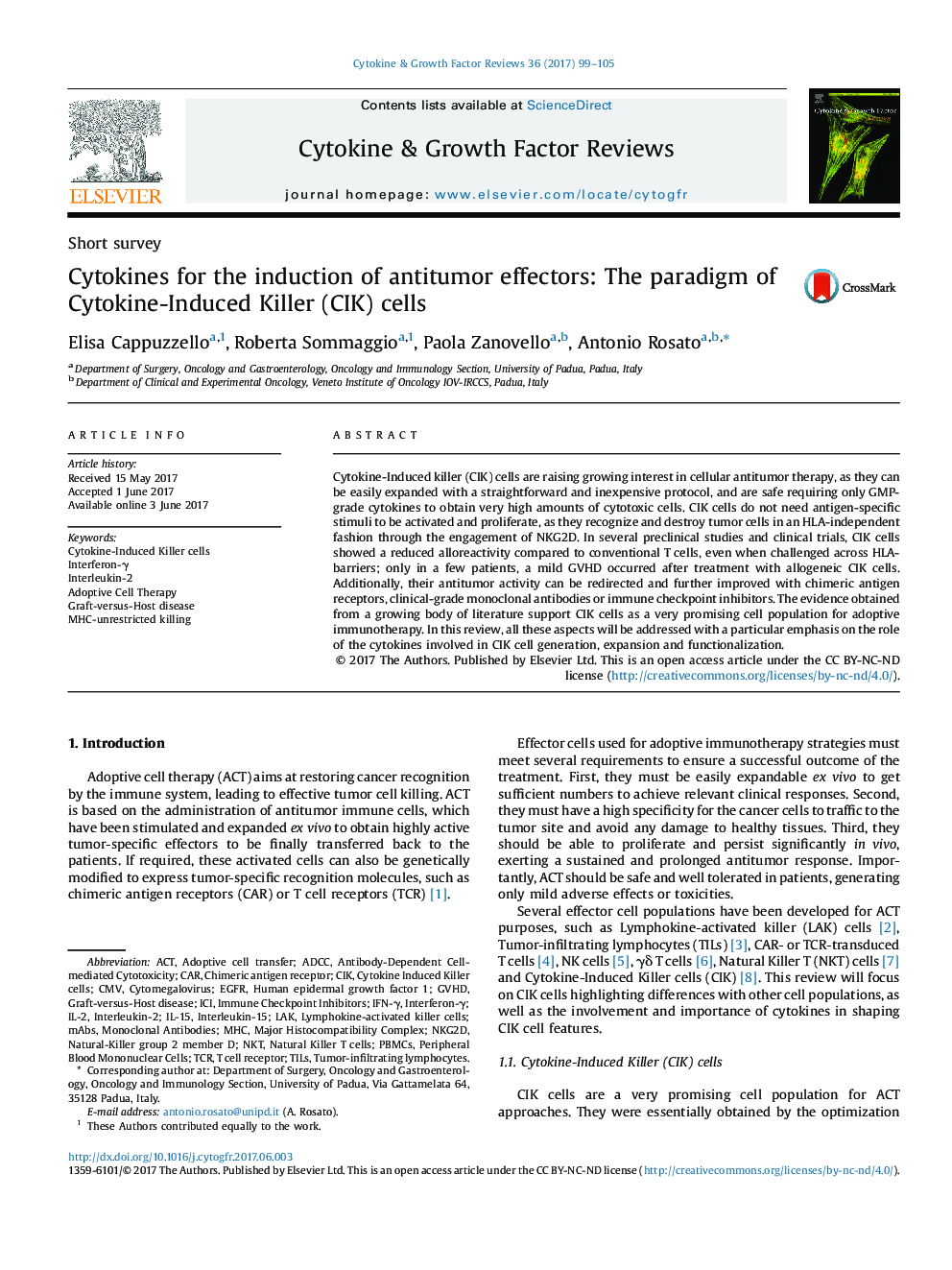| Article ID | Journal | Published Year | Pages | File Type |
|---|---|---|---|---|
| 5531195 | Cytokine & Growth Factor Reviews | 2017 | 7 Pages |
â¢Cytokine-Induced killer (CIK) cells are obtained from blood cells by the timed addition of IFN-γ, OKT3 and IL-2 to the culture medium.â¢CIK cells antitumor cytotoxicity is HLA-independent and mainly involves NKG2D.â¢CIK cells show a reduced alloreactivity even when challenged across HLA-barriers; this results in a reduced risk of GVHD in treated patients.â¢CIK cell antitumor activity can be redirected and further improved with chimeric antigen receptors, clinical-grade monoclonal antibodies or immune checkpoint inhibitors.
Cytokine-Induced killer (CIK) cells are raising growing interest in cellular antitumor therapy, as they can be easily expanded with a straightforward and inexpensive protocol, and are safe requiring only GMP-grade cytokines to obtain very high amounts of cytotoxic cells. CIK cells do not need antigen-specific stimuli to be activated and proliferate, as they recognize and destroy tumor cells in an HLA-independent fashion through the engagement of NKG2D. In several preclinical studies and clinical trials, CIK cells showed a reduced alloreactivity compared to conventional T cells, even when challenged across HLA-barriers; only in a few patients, a mild GVHD occurred after treatment with allogeneic CIK cells. Additionally, their antitumor activity can be redirected and further improved with chimeric antigen receptors, clinical-grade monoclonal antibodies or immune checkpoint inhibitors. The evidence obtained from a growing body of literature support CIK cells as a very promising cell population for adoptive immunotherapy. In this review, all these aspects will be addressed with a particular emphasis on the role of the cytokines involved in CIK cell generation, expansion and functionalization.
